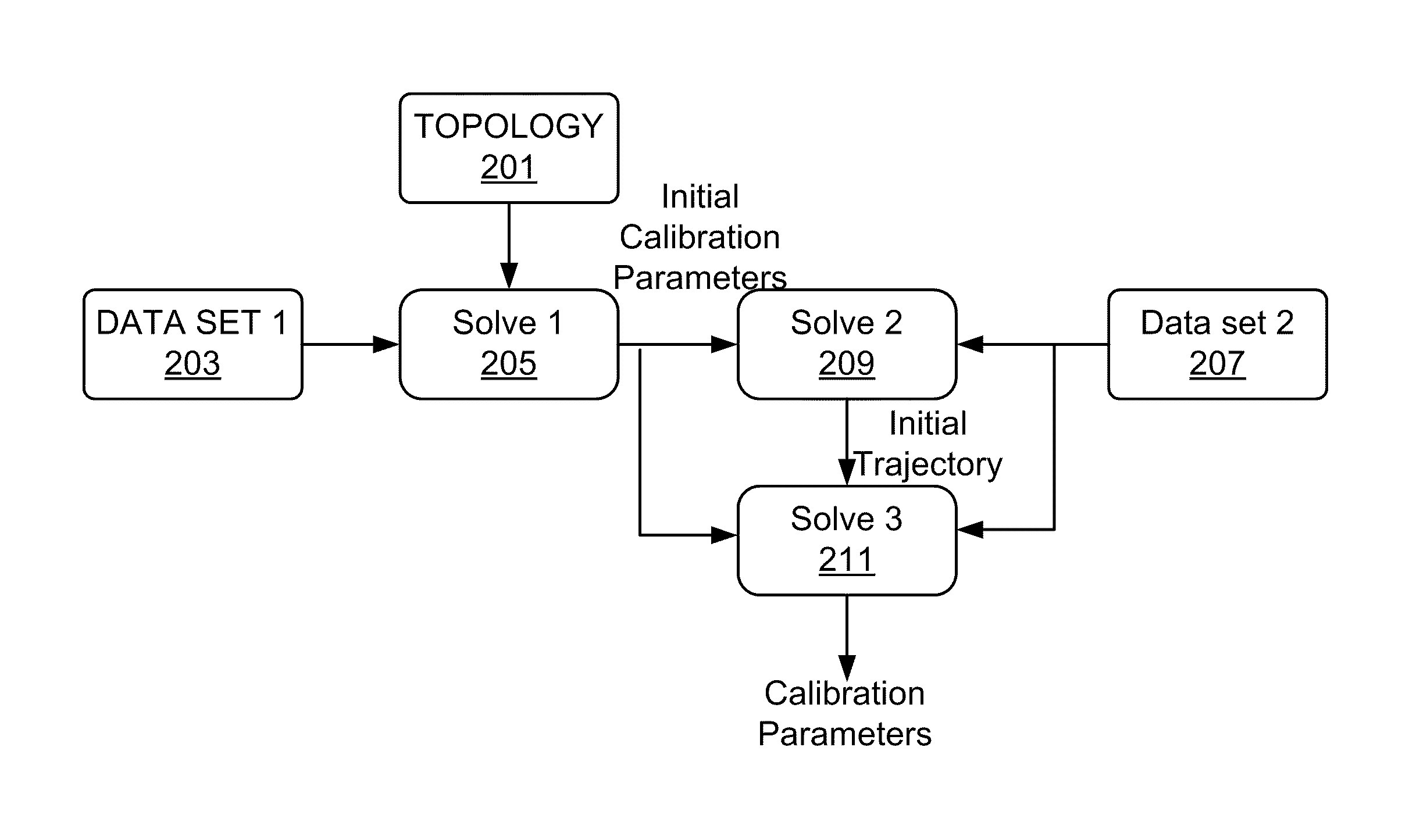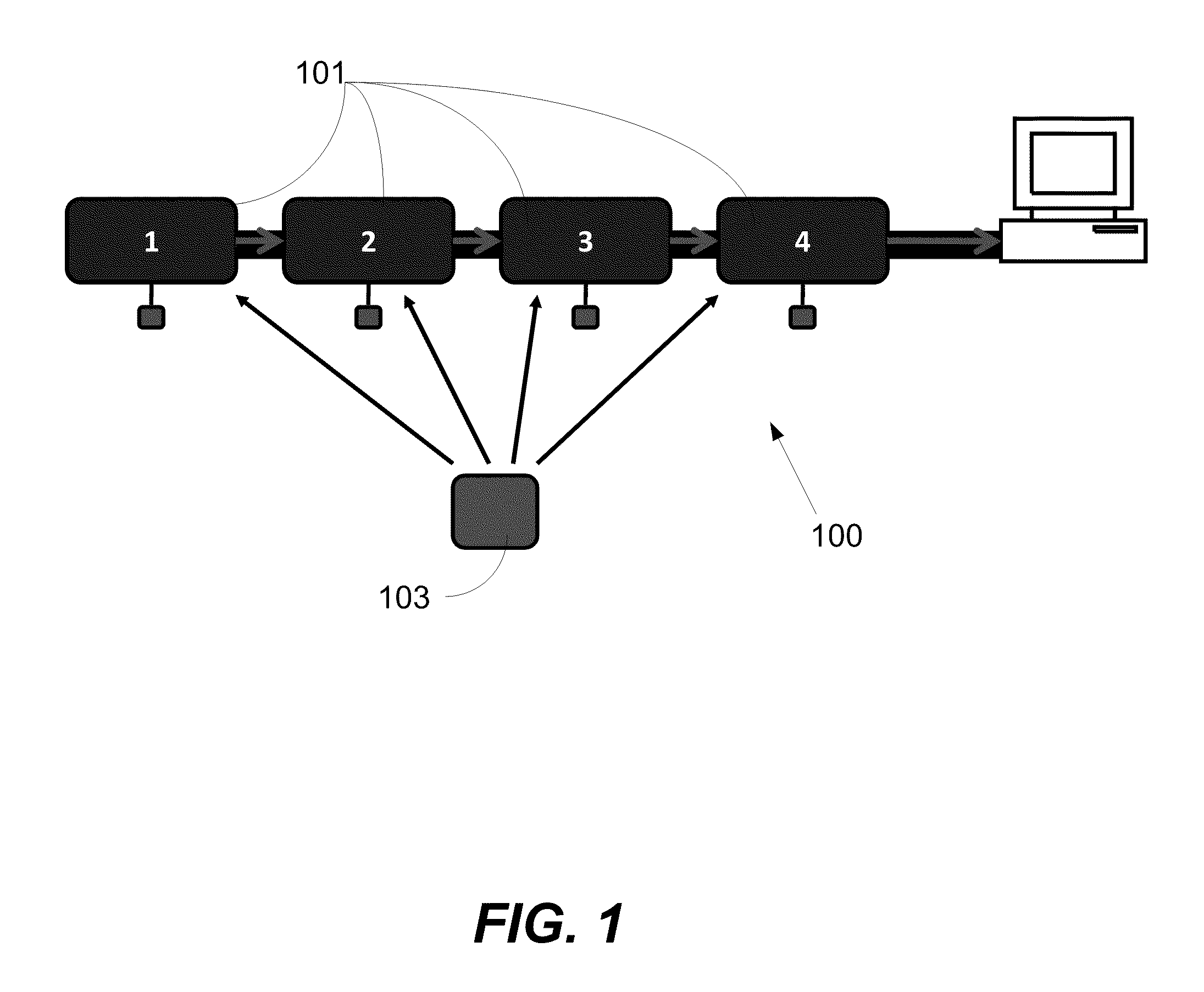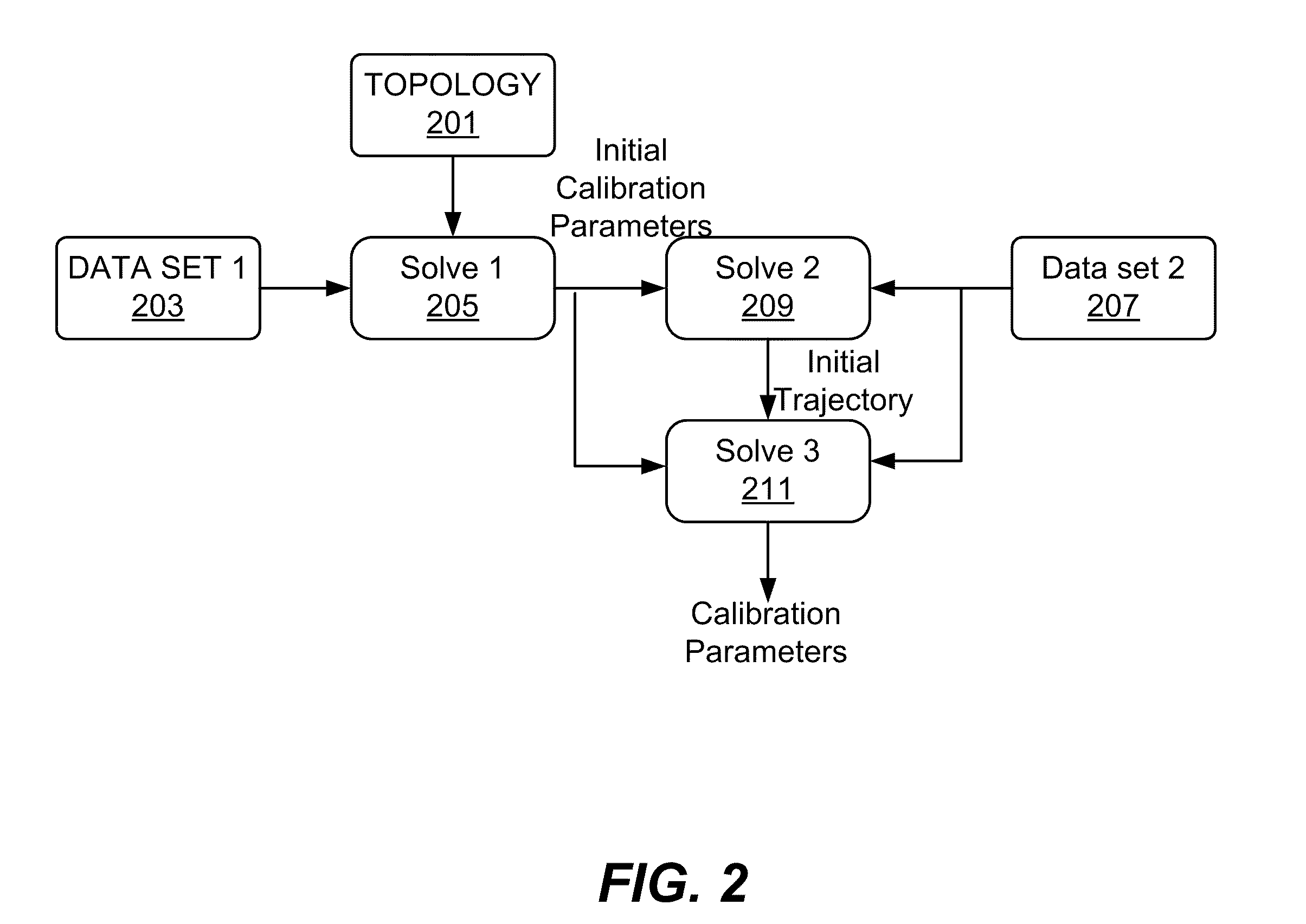Positioning system calibration
a positioning system and calibration technology, applied in direction finders, directions using radio waves, instruments, etc., can solve the problems of disproportionate impact on overall system accuracy, non-intuitive errors in system performance as a whole, and inability to accurately determine the position of the receiver and the calibration transmitter, etc., to achieve fast and easy calibration, eliminate or minimize the above mentioned drawbacks
- Summary
- Abstract
- Description
- Claims
- Application Information
AI Technical Summary
Benefits of technology
Problems solved by technology
Method used
Image
Examples
Embodiment Construction
[0021]Prior to discussing specific techniques and implementations, an exemplary RF positioning system, for use as a basis of discussion, will be described by reference to FIG. 1. The illustrated UWB system 100 consists of a network of synchronized and stationary (rigidly fixed, mounted) receivers 101, all taking very precise time-of-arrival (TOA) measurements of signals originating from a transmitter 103. That is, the TOA measurement γmnk is the time (according to its local clock) where receiver m receives the k-th pulse from transmitter n. It can be modeled as
γmnk=τnk+∥rm−tnk∥2+Δτm+δnmk+emnk, (1)
[0022]Where τnk is the time-of-transmission of the k-th pulse from transmitter n, tnk is the position of transmitter of the k-th pulse from transmitter n, rm is the position of the m-th receiver and Δτm is the clock-offset of the m-th receiver. δmnk≧0 is a possibly nonzero delay due to non line-of-sight conditions or multipath and emnk is Gaussian noise.
[0023]Without loss of generality, al...
PUM
 Login to View More
Login to View More Abstract
Description
Claims
Application Information
 Login to View More
Login to View More - R&D
- Intellectual Property
- Life Sciences
- Materials
- Tech Scout
- Unparalleled Data Quality
- Higher Quality Content
- 60% Fewer Hallucinations
Browse by: Latest US Patents, China's latest patents, Technical Efficacy Thesaurus, Application Domain, Technology Topic, Popular Technical Reports.
© 2025 PatSnap. All rights reserved.Legal|Privacy policy|Modern Slavery Act Transparency Statement|Sitemap|About US| Contact US: help@patsnap.com



